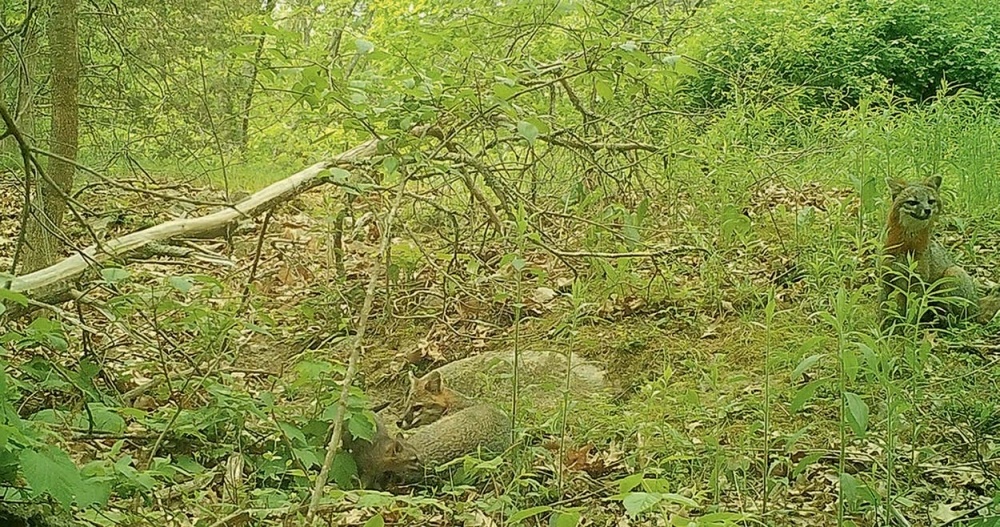Gray foxes inhabit areas of dense cover, usually close to water. They den in the ground, cavities between rocks and ledges, brush piles, tree holes, and hollow logs. In 2018, in a wooded residential area of southern New Hampshire, a pair of gray foxes made their den beneath a rock ledge near Jake Kritzer’s driveway. They had visited the site since the previous fall, but by April they were more active in and around the den.
In May, a kit emerged. Every day for a few days, usually in the afternoon, the young fox would leave the den in the company of one of the adults. The parents came and went, often returning to the den with food in their jaws: a gray squirrel, a rabbit, even a bat once.
A few weeks later, the kit made its first solo excursion outside the den, lingering only briefly. The next night, the kit made a second solo exploration around the den entrance. One minute, two minutes, ten minutes…a bobcat pounced and killed it. The bobcat returned in vain for more prey, and the adults disappeared in the surrounding woods. Except for some winter visits, they did not appear again near the den during the next year.
The den, however, did not go unused. It provided a retreat for woodchucks in summer and fall, and shelter from winter weather for striped skunks and opossums. And the site continued to have many animal visitors. Red foxes, bobcats, raccoons, coyotes, weasels, a fisher, squirrels, chipmunks, and deer all passed through the area. Even neighborhood dogs and cats came to visit.
This is the story assembled by Kritzer, who used a camera trap to monitor the den over the course of three years, and Maximilian Allen of University of Illinois. Their findings appeared in the August 2023 Journal of Threatened Taxa.
Kritzer, who directs the Northeastern Regional Association of Coastal Ocean Observing Systems, did not know much about gray foxes, but their appearance in his life made him want to learn more. He didn’t find much in the scientific literature – “perhaps a reflection of their reclusiveness,” he said – but there were a few papers authored by Allen. Correspondence led to collaboration.
“This is an excellent example of the types of observations that are possible when using camera traps,” said Allen. Before the advent of this technology, it would have been much more difficult to document use of the den and events such as a bobcat killing a kit and gray fox predation on bats, which have not been frequently documented. The study showed that, although gray foxes typically are active at night for most of the year, the parent foxes at this den ventured out during the day when they were raising a kit. Another takeaway of this study is how important dens are for protecting young.


